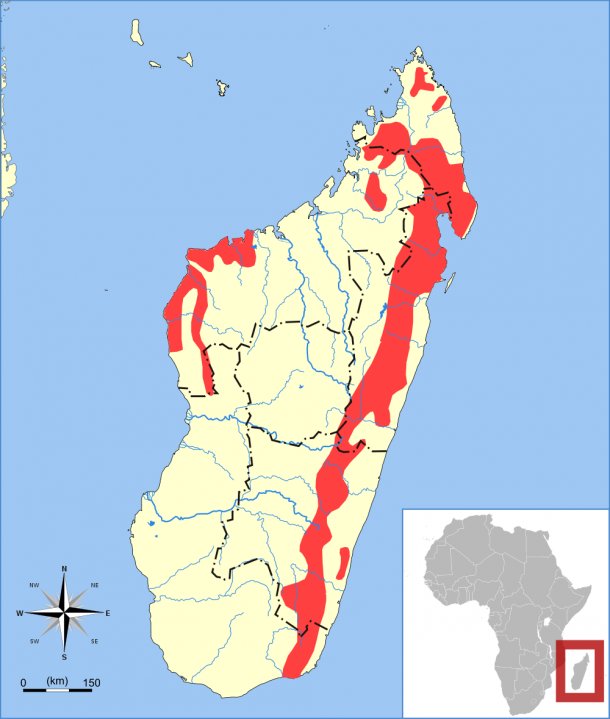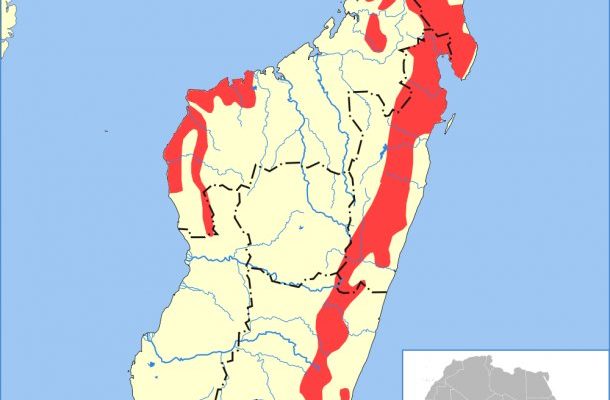
Imagine sipping coffee on a porch, discussing the strange and intriguing wildlife of Madagascar. The aye-aye, native to this island, is quite the character in its own right. These animals are a rare example of evolution at work, designed to thrive in their environment. But what does their habitat look like, and why is it so crucial for their survival? Let’s dive into the world of aye-ayes and explore the nooks and crannies of their leafy home.
What Are Aye-Ayes?
Before we get into where aye-ayes live, it’s important to understand what they are. Aye-ayes are a type of lemur, and they’re notable for having an unusual appearance. They possess large, expressive eyes adapted for night vision, which help them navigate through the dark, dense forests of Madagascar. Their most distinctive feature is their long, thin middle finger, which they use to tap on trees to locate insects hiding within the wood.
You can picture them as tiny, furry explorers, using their specialized fingers like probes to dig out grubs. Imagine using a cocktail stirrer to fish out the last bits of sugar at the bottom of your drink—that’s how the aye-aye uses its finger!
Madagascar: The Aye-Aye’s Only Home
Aye-ayes thrive exclusively in Madagascar, the world’s fourth-largest island, located off the southeast coast of Africa. Here’s the thing: Madagascar is often called the “eighth continent” because of its unique biodiversity. About 90% of the wildlife here is found nowhere else on Earth, making it a hotspot for animal lovers and researchers alike.
The aye-aye’s habitat is primarily found in tropical rainforests, which are lush and packed with life. They’re well adapted to these dense environments, where they can find plenty of food and places to hide from predators. But their range doesn’t stop there. Aye-ayes can also be spotted in spiny forests and dry deciduous forests, showing just how versatile they can be when it comes to their living conditions.
The Types of Habitats Aye-Ayes Prefer
Aye-ayes are flexible about their habitats. While they love the rainforest, they can adapt to different types of forests. Here are the main habitats where you might find them:
- Tropical Rainforests: These are their primary homes, filled with tall trees and rich vegetation. The abundant food sources here make it an ideal environment.
- Dry Deciduous Forests: During dry seasons, aye-ayes venture into these forests, where the trees shed their leaves but still provide food.
- Spiny Forests: Found in the southern part of Madagascar, these areas have unique flora. Aye-ayes can still find spots to thrive here, although it’s less common.
You might be wondering, why are these habitats so important? The cover of trees offers shelter while their branches harbor the insects and fruits the aye-aye loves!
The Aye-Aye’s Range Across Madagascar
Aye-ayes aren’t found in every corner of Madagascar. Their range is somewhat limited, mostly concentrated in the eastern rainforests. They’ve been spotted in various national parks, including Andasibe-Mantadia National Park and Ranomafana National Park.
Interestingly, these parks are crucial for conservation efforts. The aye-aye is classified as “Endangered” due to habitat destruction and human encroachment. The loss of forests means fewer spots for them to live, making their protected areas vital for their survival.
One fascinating aspect of their distribution is how isolated some populations are. Different regions of Madagascar have varying environmental conditions, which has led to distinct behaviors and adaptations in aye-aye groups. This is a perfect example of how evolution shapes life based on habitat.
What Threats Do Aye-Ayes Face in Their Habitat?
Living in a unique place like Madagascar comes with its challenges. Aye-ayes face notable threats that impact their habitat and survival. Here are some of the main concerns:
- Deforestation: One of the biggest threats is the cutting down of trees for agriculture and logging. As forests disappear, aye-ayes lose their homes and food sources.
- Human Conflict: Locals have historically viewed the aye-aye as a bad omen. Many believe these creatures bring misfortune, leading to unnecessary killings.
- Climate Change: Changes in climate affect the delicate balance of ecosystems, potentially altering food availability and habitat conditions for aye-ayes.
These threats highlight the importance of conservation. Protecting their habitat helps preserve not just the aye-aye but the entire ecosystem of Madagascar, filled with rich biodiversity.
Conservation Efforts for Aye-Ayes
Conservationists are working hard to protect aye-ayes and their habitats. Various organizations are focused on raising awareness and implementing protective measures. Here’s what’s being done:
1. Protected Areas: National parks and reserves are being established and expanded. These areas safeguard the ecosystems that support aye-ayes and other endemic species.
2. Education and Awareness: Efforts to educate the local population help reframe the aye-aye’s image. By understanding their role in the ecosystem, locals can learn to coexist rather than fear these creatures.
3. Research and Monitoring: Scientists are conducting research to track aye-aye populations and their habitat use. This information is vital for effective conservation strategies.
Let’s remember the rich diversity these animals represent. They’re not just quirky forest dwellers; they play a crucial part in the overall health of their ecosystem.
Final Thoughts on Aye-Ayes and Their Habitat
The aye-aye is a remarkable creature that captivates the imagination. Their unique adaptations and behaviors make them a fascinating subject of study and a crucial part of Madagascar’s biodiversity.
As we’ve explored, aye-ayes live primarily in the lush rainforests of Madagascar, but they can adapt to other habitats as well. Their survival is tied closely to the health of their environment, and with ongoing threats, conservation efforts are more important than ever.
With a little effort and awareness, we can help secure a future for these quirky primates and preserve the unique beauty of their home. The aye-aye teaches us about the delicate balance of life and the importance of protecting our natural world.

